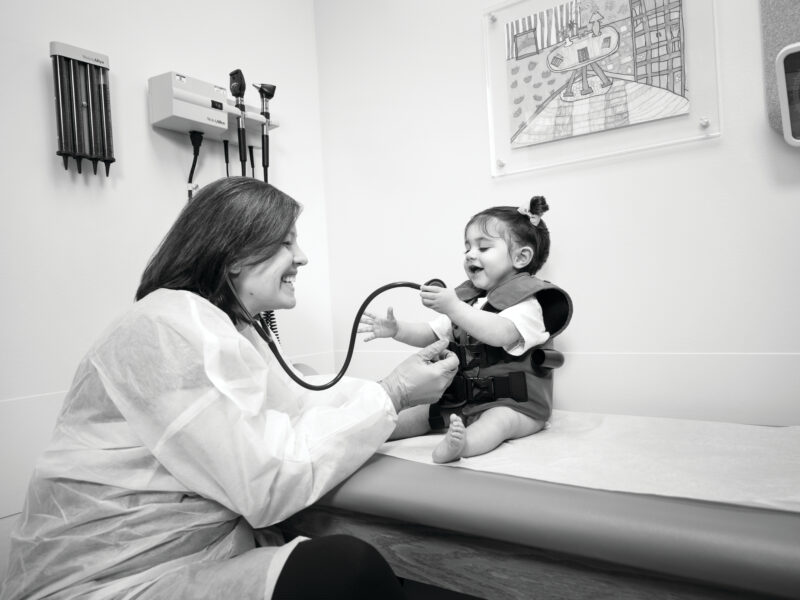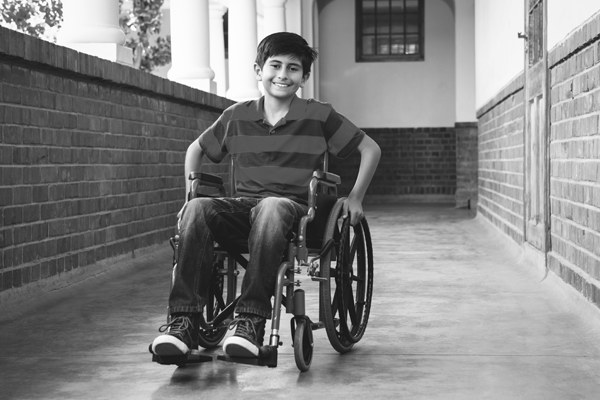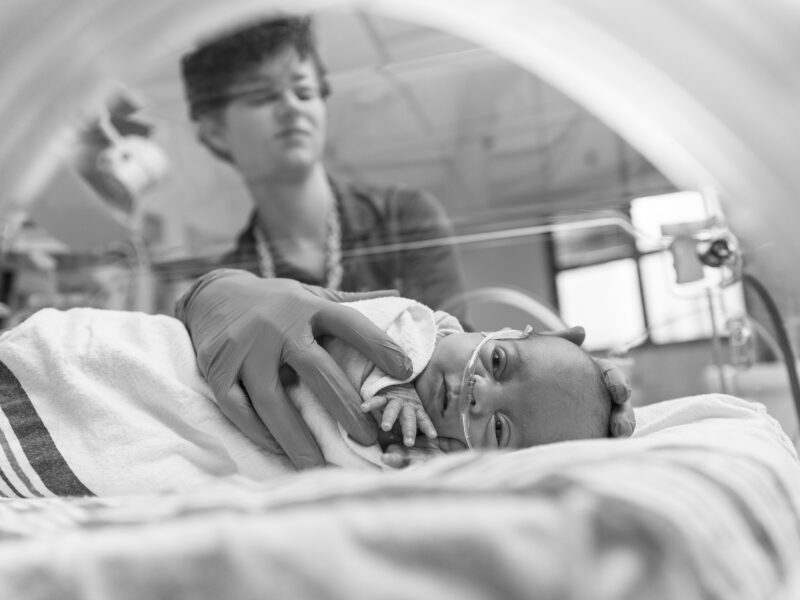Could Earlier Spirometry Get CF Inpatients Home Sooner?
Could Earlier Spirometry Get CF Inpatients Home Sooner? https://pediatricsnationwide.org/wp-content/themes/corpus/images/empty/thumbnail.jpg 150 150 Katie Brind'Amour, PhD, MS, CHES Katie Brind'Amour, PhD, MS, CHES https://pediatricsnationwide.org/wp-content/uploads/2021/03/Katie-B-portrait.gif- June 26, 2018
- Katie Brind'Amour, PhD, MS, CHES
A retrospective chart review suggests early spirometry is associated with shorter length of stay.
As multicenter studies examine whether length of hospital stay and duration of treatment can be safely shortened for cystic fibrosis-related pulmonary exacerbations, physician-researchers at Nationwide Children’s Hospital have been exploring another unresolved angle related to these admissions: when to do pulmonary function tests. The findings of their retrospective chart review reveal a potential role for spirometry early in the course of inpatient stays to enable patients to go home sooner.
“We found that the earlier a patient got a pulmonary function test, the earlier they were discharged,” says Katelyn Krivchenia, MD, fellow in the Section of Pulmonary Medicine at Nationwide Children’s Hospital and first author on the study, which was published in Lung in January. “Knowing this and measuring pulmonary function earlier may help save patient families money, conserve hospital resources and help reduce the risks associated with inpatient stays.”
Pulmonary exacerbations are periods of poor respiratory health affecting patients with cystic fibrosis, particularly as the disease progresses or when treatment compliance is low. There is no official guidance specifying how long patients should stay in the hospital for airway clearance therapy and intravenous antibiotics during these episodes, and average length of stay varies from place to place, with most patients staying at least a full week. One tool to measure lung function — and to help determine whether the patient has improved enough to continue treatment at home — is spirometry, or forced expiratory volume in one second (FEV1).
Dr. Krivchenia and other clinician-scientists at Nationwide Children’s conducted a retrospective chart review of 1035 hospitalizations of 242 patients. Average length of stay was 10 days, with mean time to first pulmonary function test four days after admission.
Each additional day to first pulmonary function test was associated with another day at the hospital, even after controlling for pre-admission spirometry results, age, sex, insurance type, bacterial culture history, diabetic control and more. Other predictors of longer stays included younger age, lack of private insurance and Burkholderia infection.
“We need to pay attention to the fact that not everyone who comes in with pulmonary exacerbation needs a long course of therapy,” says Dr. Krivchenia. “Physicians should consider spirometry earlier in the hospital stay to identify patients who may be rebounding quickly. The test could change the course of therapy and discharge.”
Patients with early rebounds in pulmonary function testing may have had a decline in pulmonary function due not to infection or increased bacterial activity but to poor compliance with respiratory therapy at home, which leads to increased mucus plugging. For these patients, who may improve quickly after proper therapy, a shorter length of stay may be appropriate once compliance concerns are addressed.
Dr. Krivchenia and Don Hayes, Jr, MD, medical director of the Lung Transplant and Advanced Lung Disease programs at Nationwide Children’s, acknowledge that the study’s primary flaw is its retrospective design, which does not allow the researchers to determine whether earlier testing directly led to earlier discharge or if perhaps earlier testing was simply offered when physicians noted other signs of improvement that may have led to earlier discharge anyway.
“The next step would be to randomize patients into standard- versus spirometry-based admission, and we hope to do that moving forward,” says Dr. Krivchenia. “Spirometry should be considered and further studied for use as a marker for patients who don’t need extended stays, particularly if the ongoing length-of-stay studies at other institutions find shorter visits non-inferior.”
In the meantime, their team has other research underway in patients with cystic fibrosis, including a national registry study to examine drops in compliance, pulmonary function and patient wellbeing as they enter adolescence and young adulthood.
“We are interested in objective measures of clinical improvement instead of empirically choosing a length of stay, in this case,” says Dr. Hayes. “It’s all part of our larger focus on health care utilization, cost effectiveness and quality improvement research to benefit patients and their families.”
Reference:
Krivchenia K, Tumin D, Nemastil CJ, Tobias JD, Hayes D Jr. Timing of Spirometry May Impact Hospital Length of Stay for Cystic Fibrosis Pulmonary Exacerbation. Lung. January 2018; 196(2):207-211.
About the author
Katherine (Katie) Brind’Amour is a freelance medical and health science writer based in Pennsylvania. She has written about nearly every therapeutic area for patients, doctors and the general public. Dr. Brind’Amour specializes in health literacy and patient education. She completed her BS and MS degrees in Biology at Arizona State University and her PhD in Health Services Management and Policy at The Ohio State University. She is a Certified Health Education Specialist and is interested in health promotion via health programs and the communication of medical information.
-
Katie Brind'Amour, PhD, MS, CHEShttps://pediatricsnationwide.org/author/katie-brindamour-phd-ms-ches/April 27, 2014
-
Katie Brind'Amour, PhD, MS, CHEShttps://pediatricsnationwide.org/author/katie-brindamour-phd-ms-ches/April 27, 2014
-
Katie Brind'Amour, PhD, MS, CHEShttps://pediatricsnationwide.org/author/katie-brindamour-phd-ms-ches/April 27, 2014
-
Katie Brind'Amour, PhD, MS, CHEShttps://pediatricsnationwide.org/author/katie-brindamour-phd-ms-ches/April 28, 2014
- Post Tags:
- Cystic Fibrosis
- Pulmonary Medicine
- Posted In:
- Clinical Updates
- In Brief
- Research







